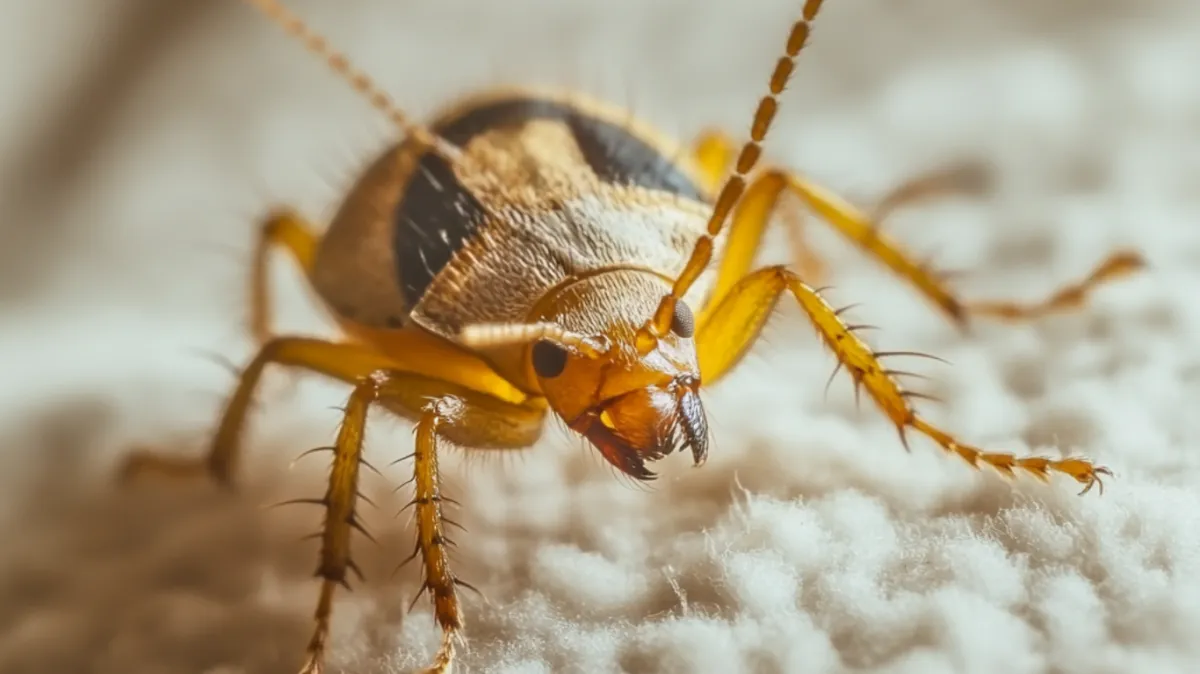
The Rockport Pest Journal
The Rockport Pest Control Journal

Spring Pest Awakening: Preemptive Strategies in Portland,TX
Why Spring Pest Prevention Matters
As winter fades and temperatures rise, pests become more active, seeking food, shelter, and ideal breeding conditions. Spring’s warmth and humidity in Texas create the perfect environment for pest populations to multiply, making early prevention essential to keeping your home pest-free. Ignoring the warning signs can result in minor pest issues turning into major infestations by summer.
Common Spring Pests and Their Risks
Ants
As food sources become more abundant outdoors, ants actively forage in kitchens, pantries, and trash bins.
Some species, like fire ants, can deliver painful stings, while carpenter ants tunnel through wood, causing structural damage.
A single scout ant can signal an entire colony, leading to rapid indoor infestations.
Cockroaches
Cockroaches thrive in warm, damp environments such as kitchens, bathrooms, and basements.
They carry bacteria like E. coli and Salmonella, contaminating surfaces and food.
Their droppings and shed skins can trigger allergies and asthma, especially in children and sensitive individuals.
Spiders
With an increase in insect activity, spiders follow their food sources indoors.
While most spiders are harmless, species like black widows and brown recluses can pose health risks with venomous bites.
Webs in corners, basements, and attics signal spider presence and potential insect infestations.
Early Prevention Strategies to Keep Pests Out
Springtime means warmer weather—and an increase in pest activity. By taking proactive measures now, you can prevent ants, roaches, spiders, and other common spring pests from invading your home.
Seal Up Entry Points
Pests can squeeze through even the smallest openings, making it essential to secure all potential entryways.
Inspect Vulnerable Areas:
Check for cracks and crevices in foundations, walls, and window frames.
Look around baseboards, utility lines, and vents where pests might enter.
Seal Gaps and Holes:
Use silicone caulk to seal small cracks in walls and around windows.
Apply weather stripping around doors to eliminate gaps.
Repair damaged window screens and ensure vents are covered with fine mesh.
Stuff larger gaps around pipes and utility openings with steel wool, as rodents cannot chew through it.
Keep Surfaces Clean:
Wipe down counters, tables, and stovetops daily to remove food residue.
Sweep and mop floors to eliminate crumbs and spills.
Proper Food Storage:
Use airtight containers for dry goods like flour, rice, and cereal.
Avoid leaving pet food out overnight.
Eliminate Moisture Sources:
Fix leaky pipes and faucets, as roaches and other pests thrive in damp areas.
Keep dish sponges dry and replace them regularly.
Ensure your refrigerator and freezer aren’t leaking water.
Manage Trash Properly:
Empty trash cans regularly and use tight-fitting lids.
Rinse recyclables before placing them in bins.
Keep Your Yard Pest-Free
A well-maintained yard reduces the chances of pests nesting near your home and finding their way inside.
Trim Vegetation and Landscaping:
Keep trees, shrubs, and bushes trimmed away from your home’s exterior.
Remove dead leaves, fallen branches, and organic debris where pests like to hide.
Eliminate Standing Water:
Clear clogged gutters and downspouts to prevent stagnant water.
Regularly empty or cover birdbaths, plant saucers, and outdoor pet bowls to reduce mosquito breeding grounds.
Fill in low spots in the yard to prevent water from pooling.
Store Firewood Properly:
Keep woodpiles at least 20 feet away from your house.
Stack firewood off the ground on a raised platform to deter termites and rodents.
Secure Outdoor Trash Bins:
Use bins with tight-fitting lids to avoid attracting raccoons, rodents, and insects.
Regularly clean trash cans to remove lingering food smells.
Declutter and Organize Storage Areas
Pests love dark, cluttered spaces where they can nest and go unnoticed. A little organization goes a long way in keeping them out.
Reorganize Storage Spaces:
Use plastic storage bins instead of cardboard boxes, which pests can chew through.
Avoid stacking items directly against walls, leaving a gap for easier inspection.
Tidy Up Your Home’s Hiding Spots:
Clean out basements, attics, closets, and garages where pests often seek shelter.
Dispose of unused papers, cardboard, and fabric, as these can serve as nesting materials.
Move Furniture and Appliances Periodically:
Sweep and vacuum behind refrigerators, stoves, and heavy furniture to remove crumbs and dust buildup.
Schedule a Professional Pest Inspection
Some pest problems are difficult to detect until they’ve already become a full-blown infestation. A trained professional can spot early warning signs and provide targeted solutions.
Comprehensive Home Inspections:
Trained technicians will identify pest hotspots, entry points, and nesting areas.
Inspections cover attics, crawl spaces, basements, and garages—places where pests often hide.
Tailored Treatment Plans:
TotalPro Pest Control provides custom solutions based on your home’s specific needs.
Preventative treatments create a barrier around your home, stopping pests before they invade.
✔ Year-Round Protection:
Regular maintenance visits ensure your home stays pest-free all season long.
Our team provides follow-ups and expert advice to keep pests away for good.
Strengthen Entry Points: Seal the Gaps Before Pests Find Them
Even the tiniest openings can be an invitation for pests to sneak inside. Strengthening your home’s exterior will make it much harder for ants, cockroaches, and rodents to find their way in.
✔ Upgrade Door Sweeps & Weather Stripping: Ensure all doors have snug-fitting sweeps at the bottom to block pest entry. Worn-out weather stripping around doors and windows should be replaced.
✔ Inspect Window Screens: Tiny tears in mesh screens can allow insects inside. Patch or replace damaged screens to keep bugs out.
✔ Fill Gaps in Walls & Foundation: Use silicone caulk, foam sealant, or steel wool to seal any small openings where pests may enter, especially around utility pipes, vents, and wiring.
✔ Install Chimney Caps & Vent Covers: Open vents and chimneys are prime access points for birds, squirrels, and large insects. Proper coverings help prevent unwanted guests.
Optimize Lighting to Reduce Insect Attraction
Outdoor lighting plays a surprisingly big role in pest activity around your home.
✔ Switch to Motion-Activated Lights: Insects and small critters are drawn to continuous light sources. Motion-detecting lights reduce unnecessary attraction while providing security.
✔ Choose Bug-Resistant Bulbs: Yellow-hued LED lights or sodium vapor bulbs attract fewer insects compared to standard white bulbs.
✔ Position Lights Strategically: Place lights away from doors and windows to avoid drawing pests toward entry points. Consider using wall-mounted or downward-facing fixtures.
✔ Turn Off Unnecessary Lights: If outdoor lights aren’t needed, switch them off to minimize insect activity near your home.
For expert pest control solutions tailored to your home, trust TotalPro Pest Control. Schedule your inspection today! 👉 [https://totalpropestcontrolportland.com/ ]

Schedule a Pest Inspection
Ready to schedule a pest inspection? Contact us today.

